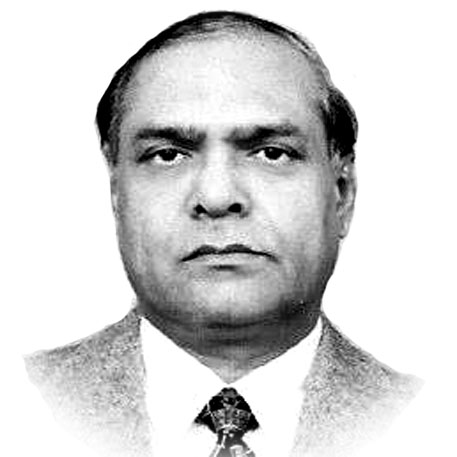Rashid A Mughal
Inequality is a social divider. It reduces rates of trust and encourages a ‘us vs. them’ mentality, thus, breaking down social ties and cohesion. The negative effects of inequality on mental health and drug use have been widely proven, both with potentially detrimental, long-lasting effects of individuals’ lives. Illegal drugs use is more common in less equal societies. The most well-established cause of high levels of violence is the scale of economic inequality. Wealth inequality in the United States (also known as the wealth gap) is the unequal distribution of assets among residents of the United States. Wealth includes the values of homes, automobiles, personal valuables, businesses, savings, and investments. But don’t feel too bad for them: Their net worth is, on average, about $740,800.
Among rich nations, the United States stands out for the extent of its wealth inequality. The top 1 percent in the U.S. own a much larger share of the country’s wealth than the 1 percent elsewhere. A Washington Post editorial lamented the “ever]?higher concentration of national wealth at the top.” Similarly, New York Times columnist Paul Krugman expressed concern that “we are once again living in an era of extraordinary wealth concentrated in the hands of a few people … And this concentration of wealth is growing.” Adults with less than $10,000 in wealth make up 64 percent of the world’s population but hold less than 2 percent of global wealth. The world’s wealthiest individuals, those owning over $100,000 in assets, total less than 10 percent of the global population but own 84 percent of global wealth.
Consider Brian Acton and Jan Koum, who created WhatsApp, which provides a free phone service for 1.5 billion users globally. Acton and Koum have built combined fortunes of $15 billion. Their success may or may not have widened wealth inequality, but their product has created huge value for consumers by reducing communication costs. America’s economic history is replete with similar stories. Walmart has generated savings for many millions of consumers while making the Walton family rich. Jason Furman, the former chair of President Barack Obama’s Council of Economic Advisers, was right to praise the company as a “progressive success story” for its role in reducing prices.
Feldstein argued that the real problem we should focus on “is not inequality but poverty.” Recent economic data reveal how these two indicators are quite different. U.S. wealth inequality has edged up in recent years, but the poverty rate has declined. Meanwhile, wages are up and unemployment is low. Federal Reserve Board data found that the top 1 percent wealth share increased slightly between 2013 and 2016, but the wealth of the median household jumped 16 percent over that period, with particularly strong gains by less]?educated households. Clearly, recent gains by the top 1 percent have not come at the expense of other Americans. We see similar patterns in other growing economies. After China began adopting market reforms in the 1970s, its economy boomed and hundreds of millions of people lifted themselves out of poverty. China’s gross domestic product (GDP) per capita in constant U.S. dollars was more than 10 times higher in 2018 than it was in 1990. The share of the Chinese population in severe poverty?—?measured by the World Bank as income of less than $3.20 per day?—?fell from 47 percent in 1990 to just 1 percent today. Yet the rise in general prosperity may have coincided with increased wealth inequality in China?—?the top 10 percent wealth share is estimated to have jumped from 41 percent in 1980 to 67 percent today.
One can see why wealth inequality is a useless measure by examining Gini coefficients across countries. The coefficients are calculated from distributions of income or wealth in populations and indicate the level of inequality in a single number from 0 to 100, with higher numbers indicating higher inequality. Wealth inequality is estimated to be high in the United States with a Gini coefficient of 85. On the other hand, many poor countries have much lower Gini coefficients, such as Ethiopia (61), Mynamar (58), and Pakistan (65). Wealthy countries such as the United States offer more opportunities and higher living standards than these poor countries, yet those countries have “better” Gini coefficients.
The United Nations produces a Human Development Index that measures income, life expectancy, and education levels in over 180 countries. A scatter plot of countries in this index and their wealth Gini coefficients shows a modestly positive relationship between the two variables?—?countries with higher wealth inequality tend to have higher human development. The Gini coefficients for many countries are probably not very accurate, but nonetheless the data do not support the idea that wealth inequality is bad for general prosperity defined in this way.
In some countries, high wealth inequality likely results from corruption. Russia, Kazakhstan, and Ukraine, for example, have wealth Gini coefficients of 88, 95, and 96, respectively, and experts believe many of the richest individuals in those countries gained their wealth from political connections. One expert noted that among Russia’s wealthiest individuals, “most have made their money by controlling companies in the natural]?resources sector?—?like gas giant Gazprom, oil companies, or metals firms?—?and use their political connections with the Kremlin to maintain their fortunes.”Inequality of income and opportunities create conditions for corruption to flourish and must be defeated by concerted public and private partnership at all levels as it gives birth to a host of other social issues and problems.
— The writer is former DG (Emigration) and consultant ILO, IOM.










